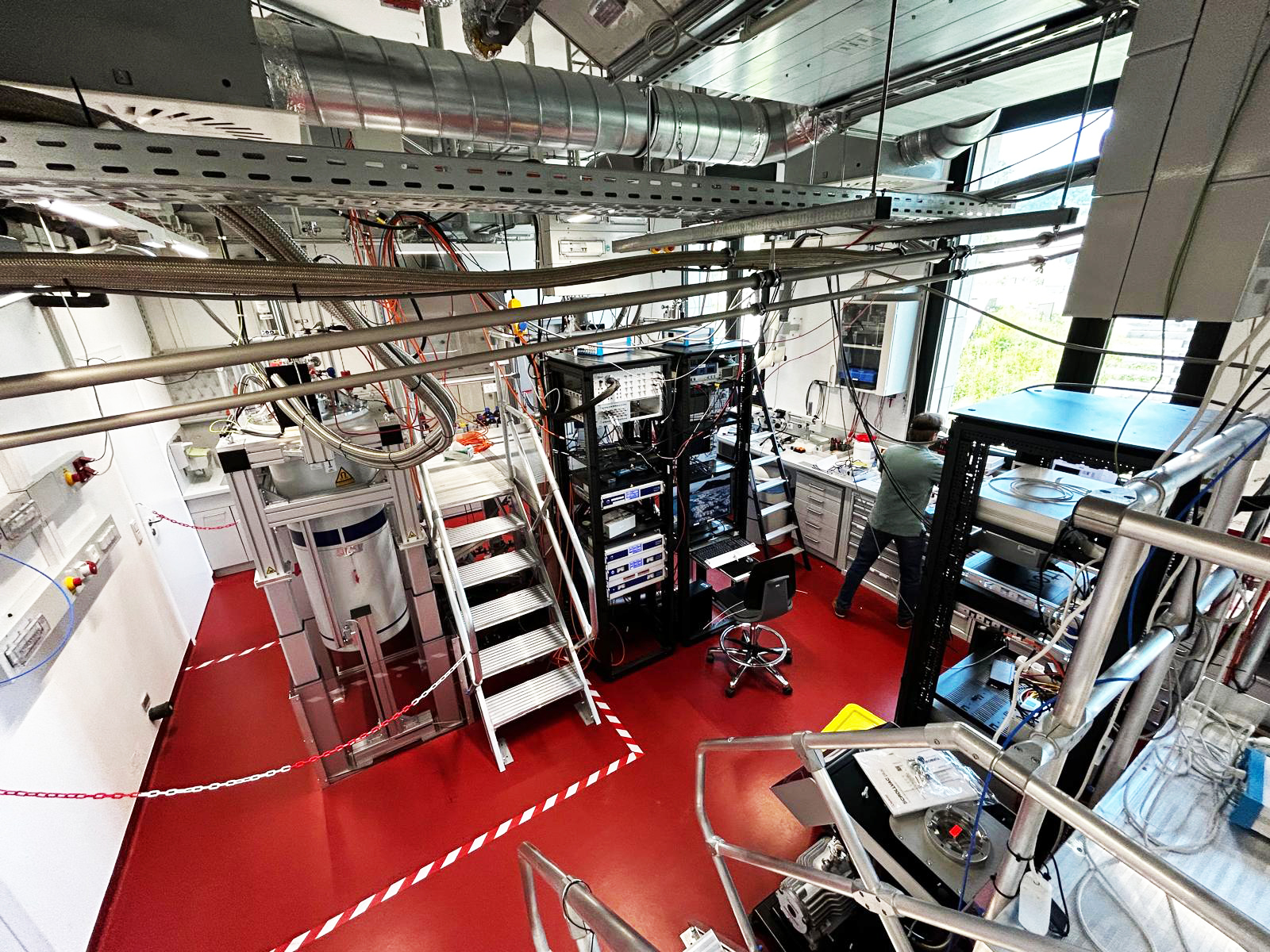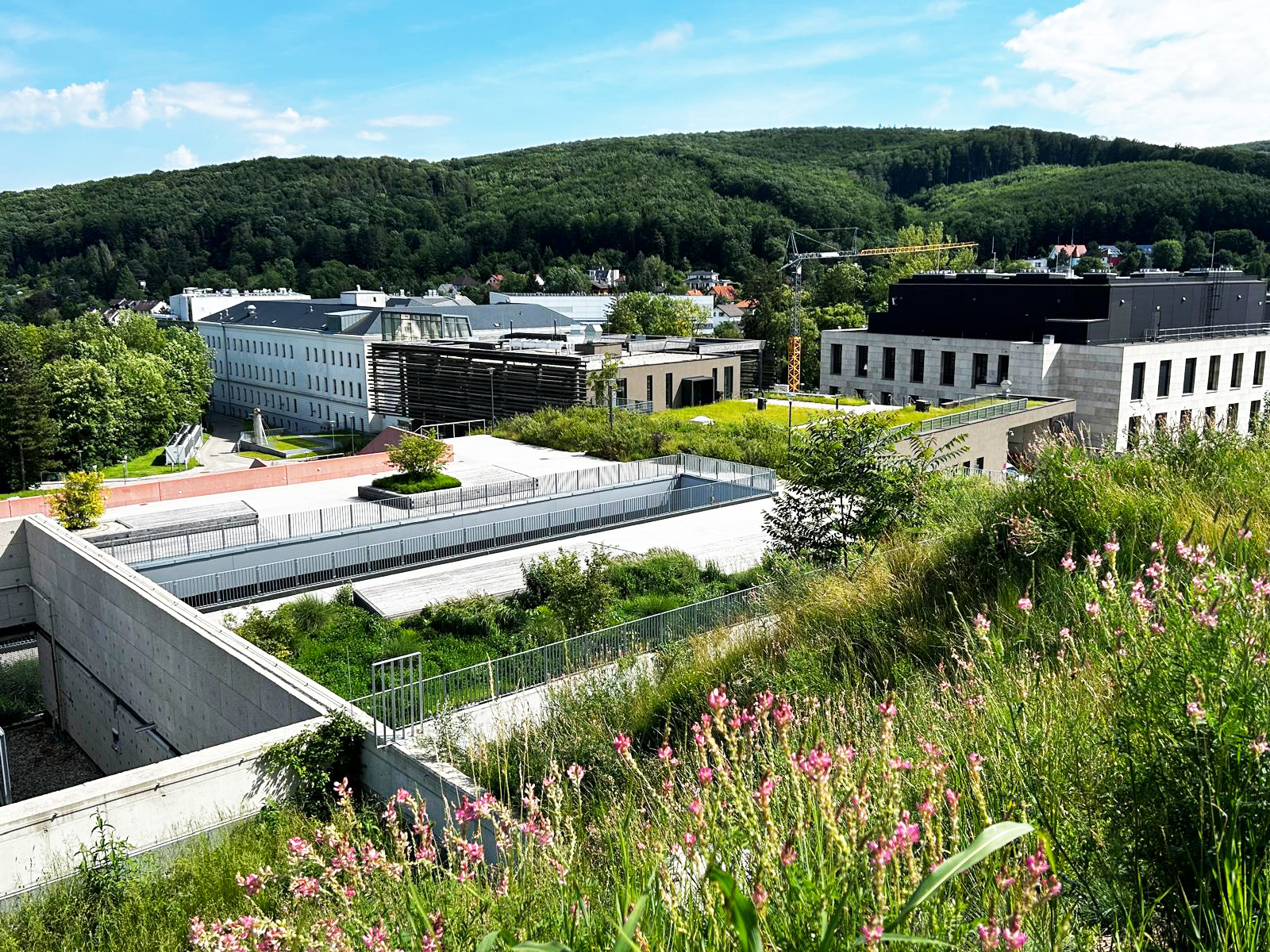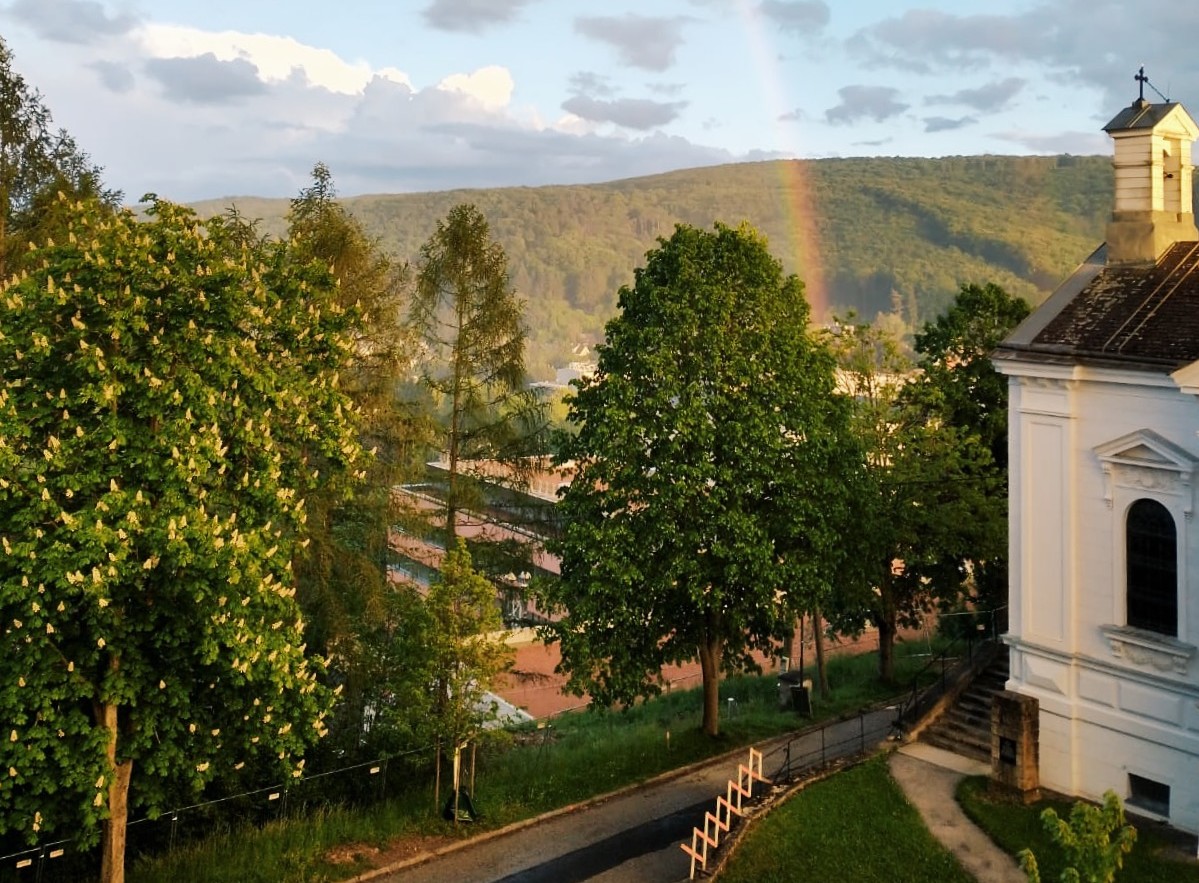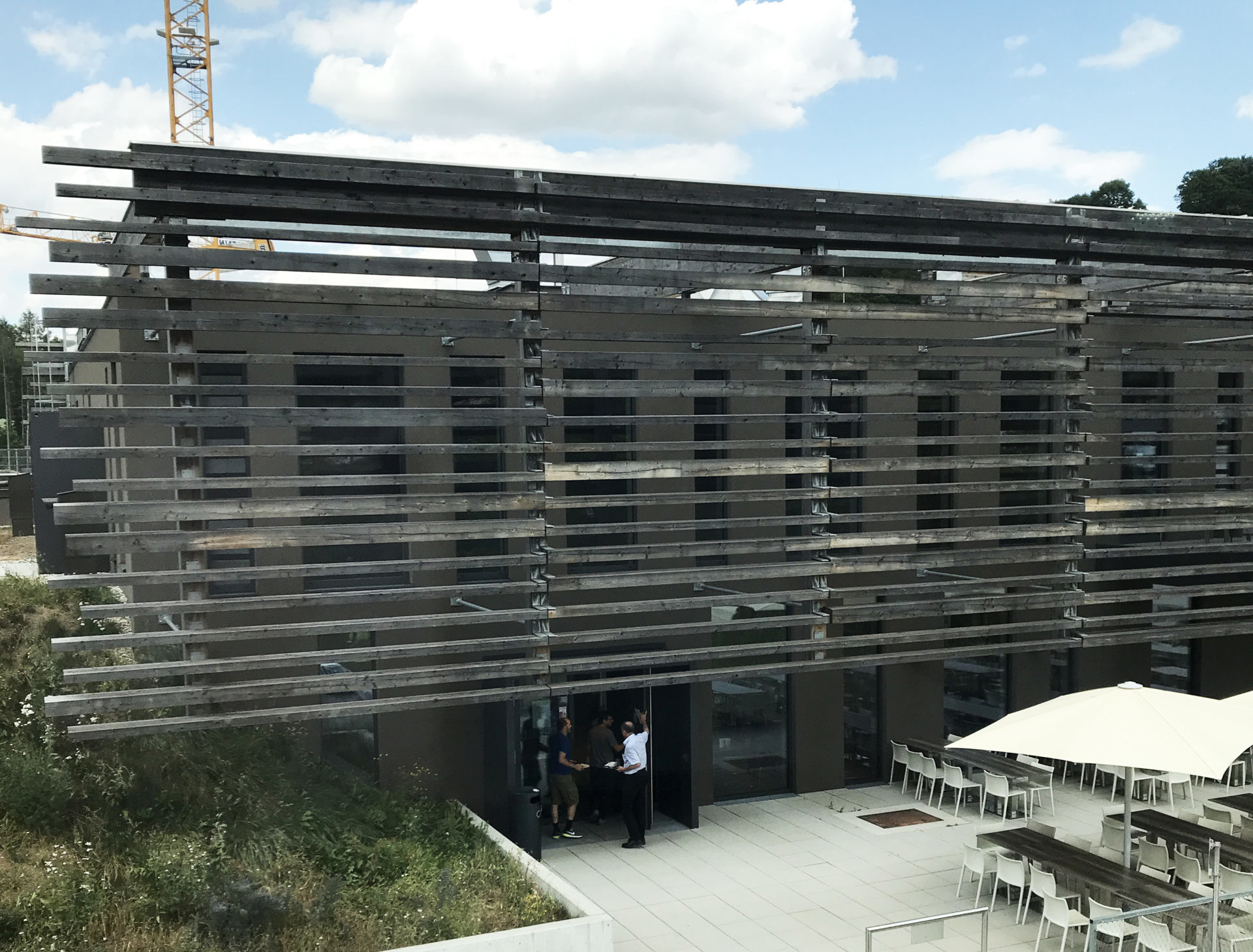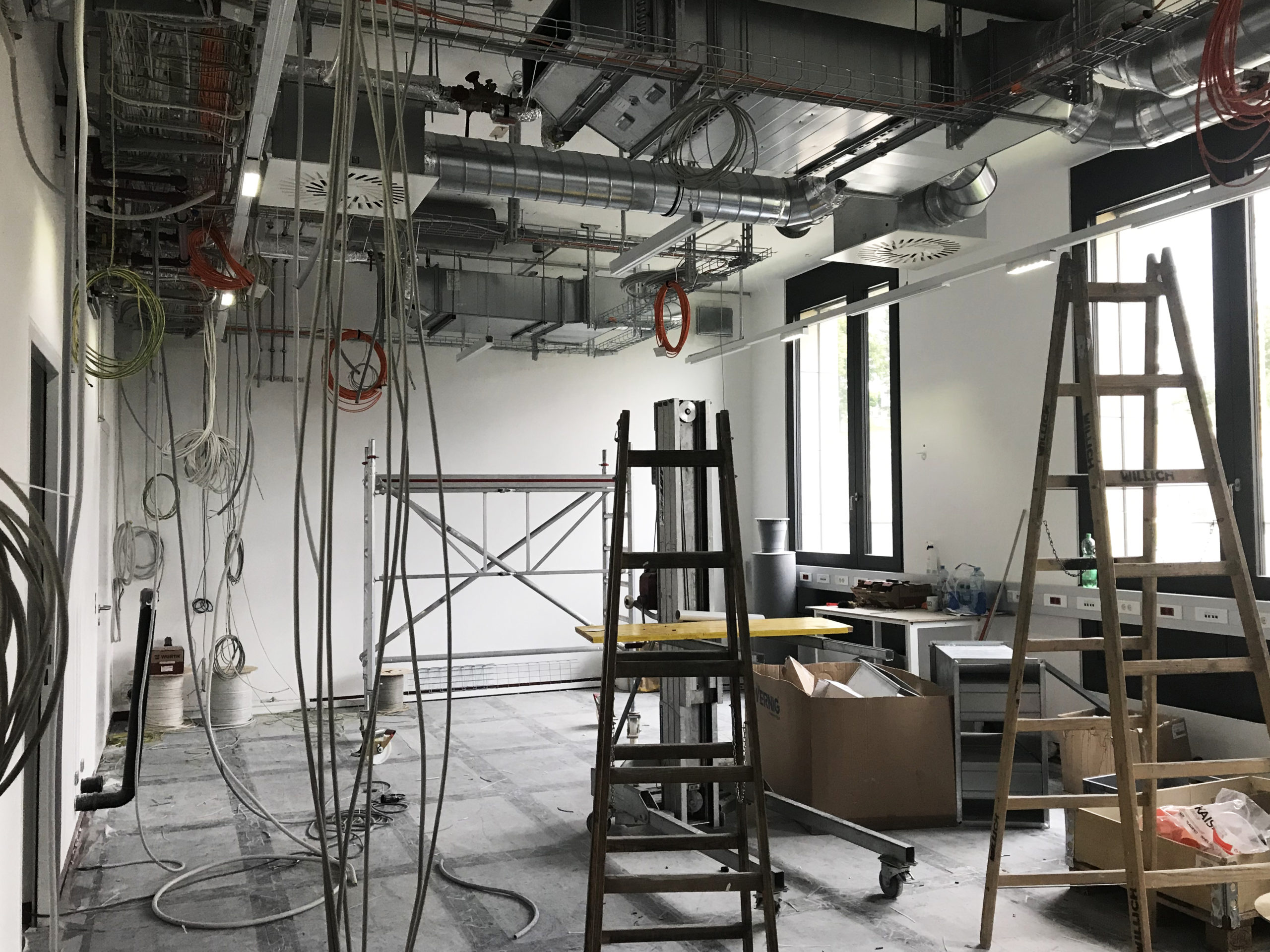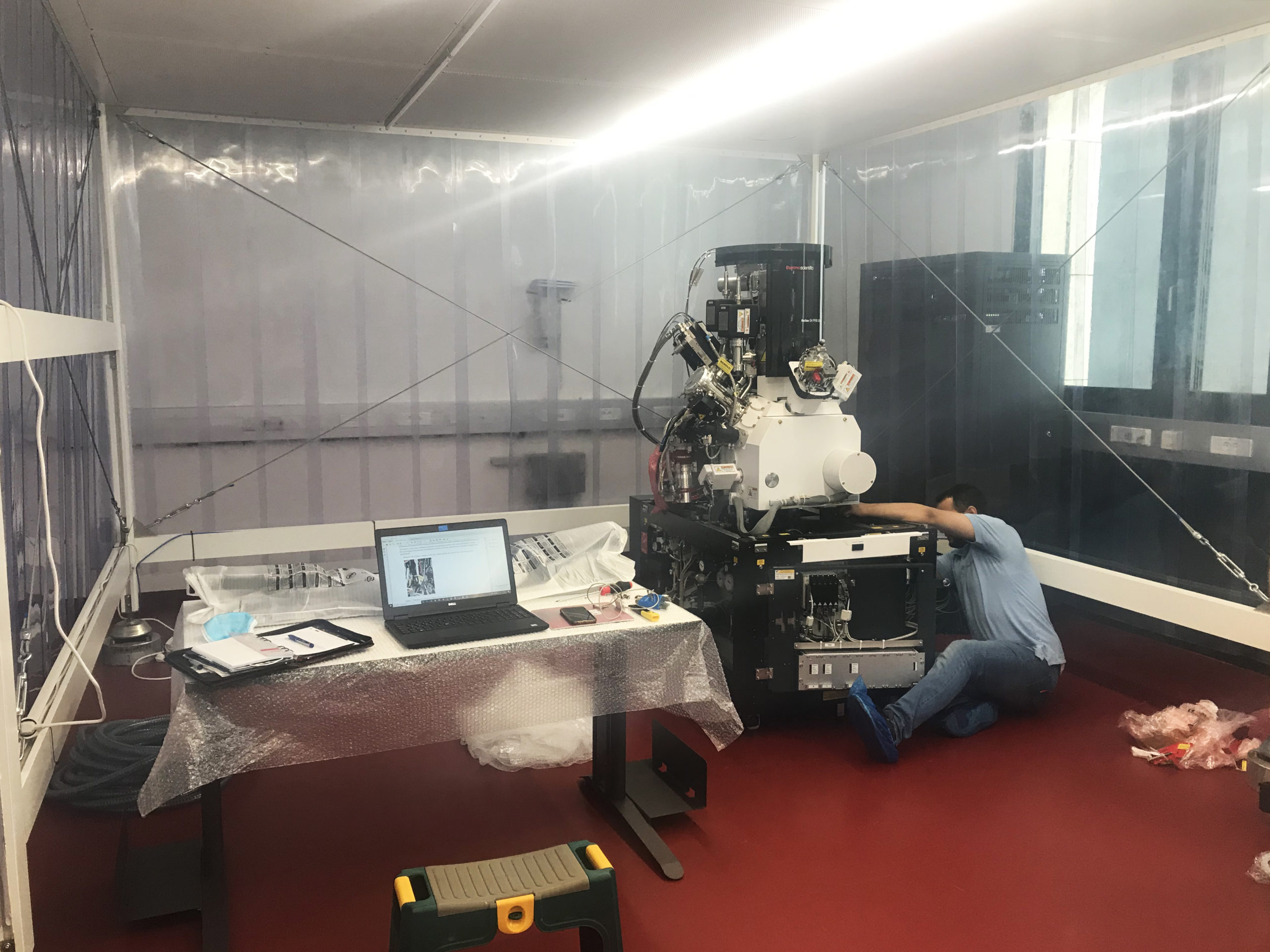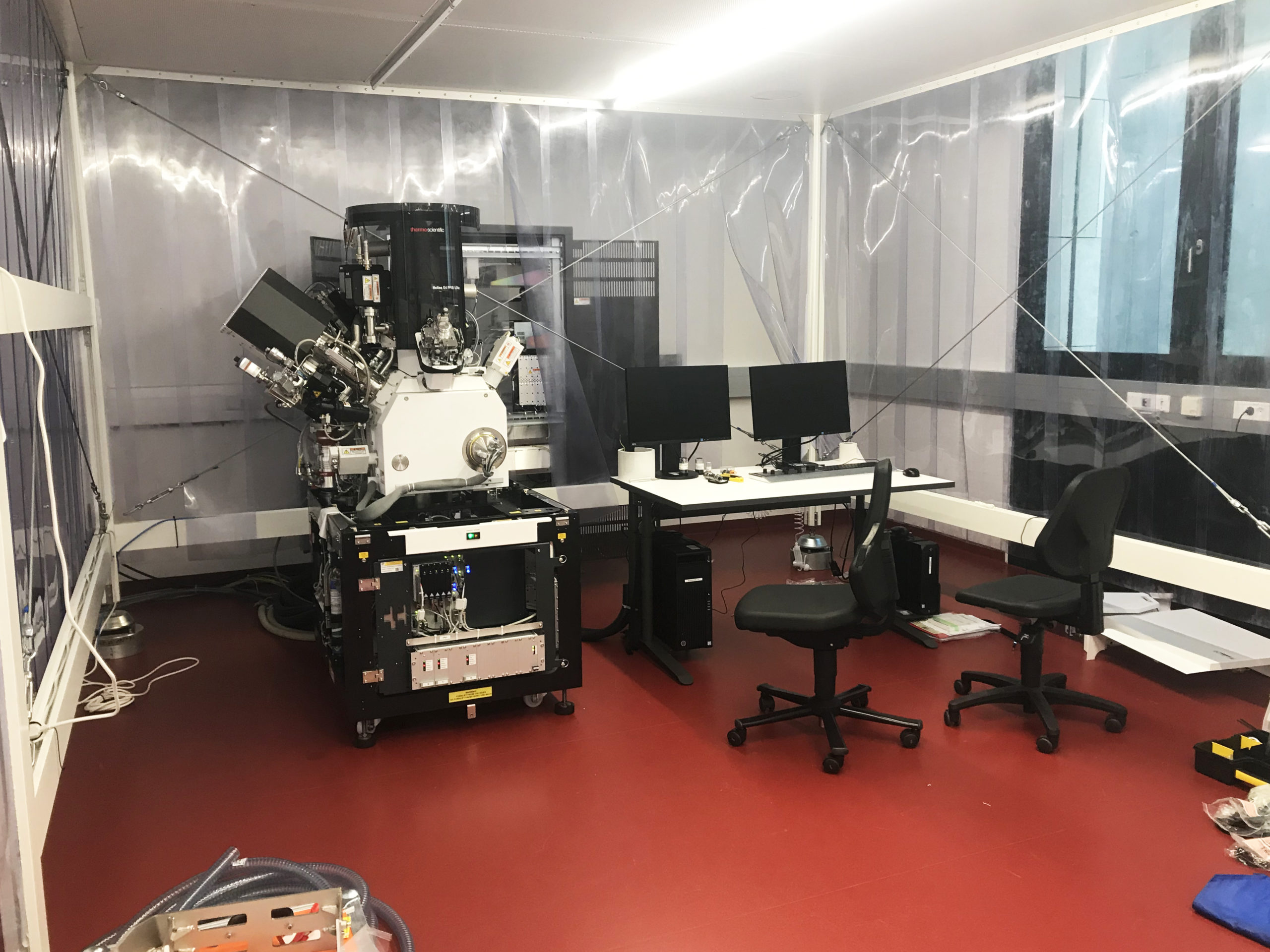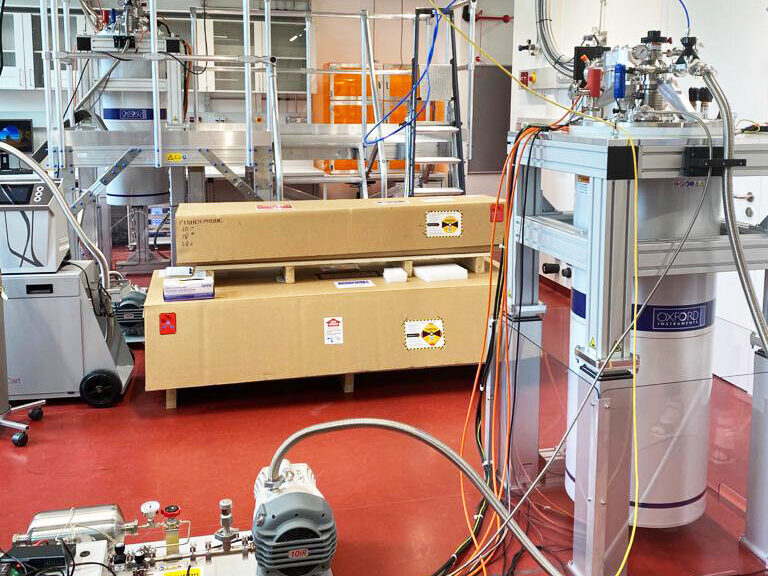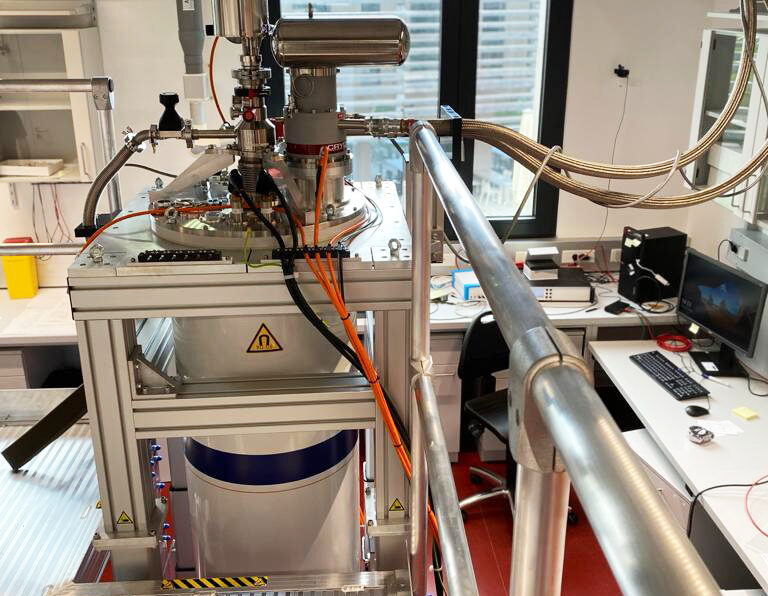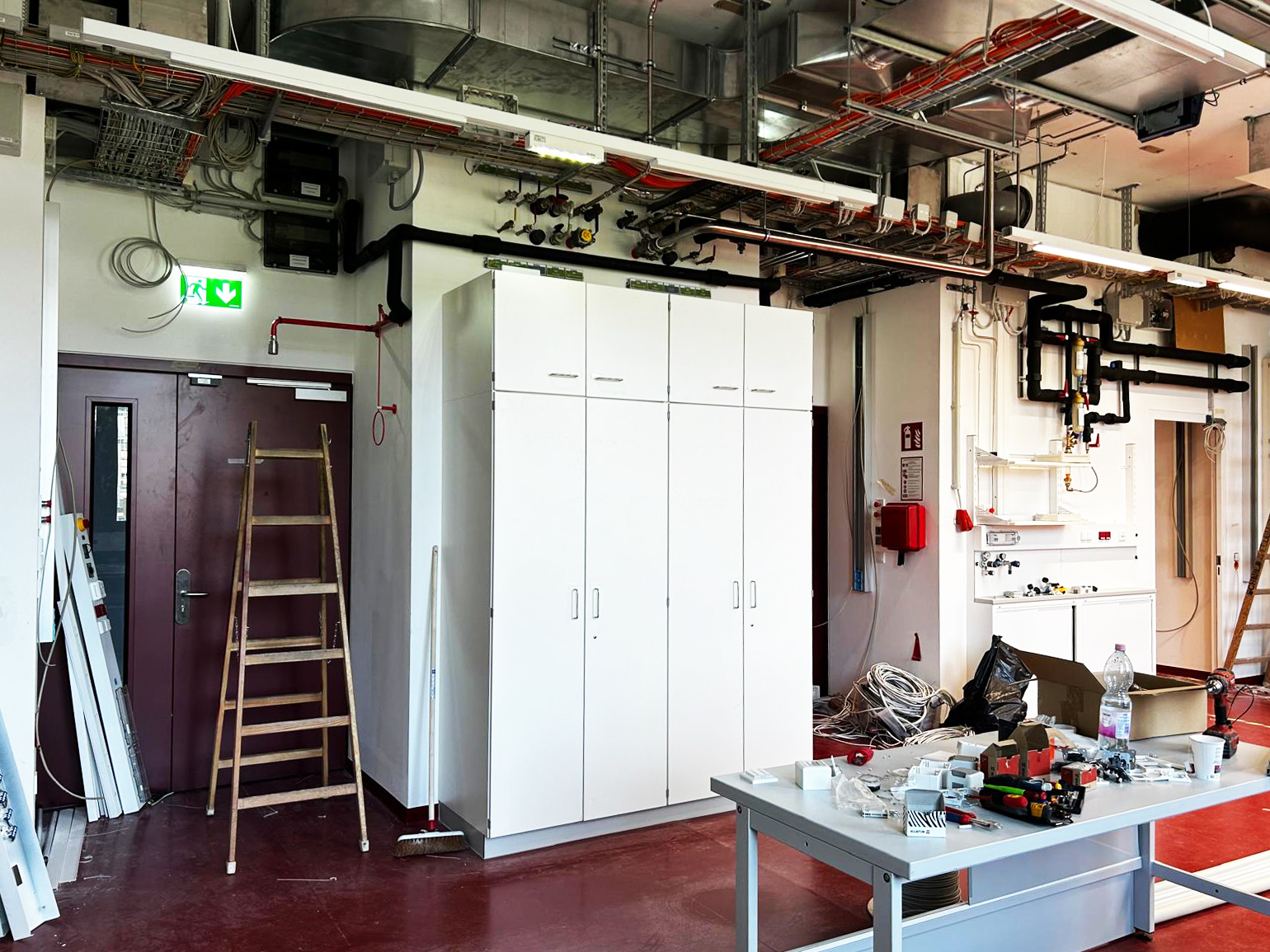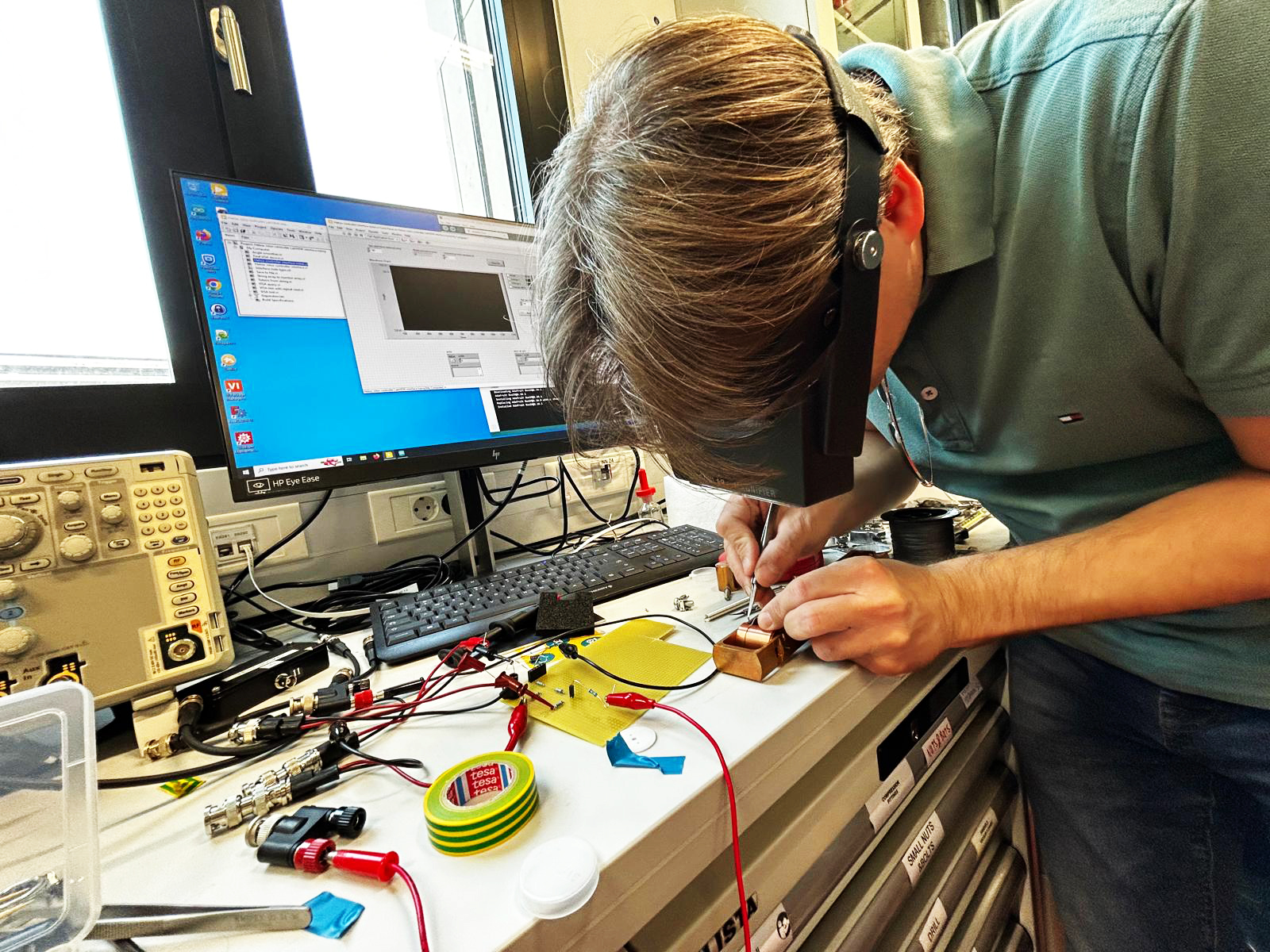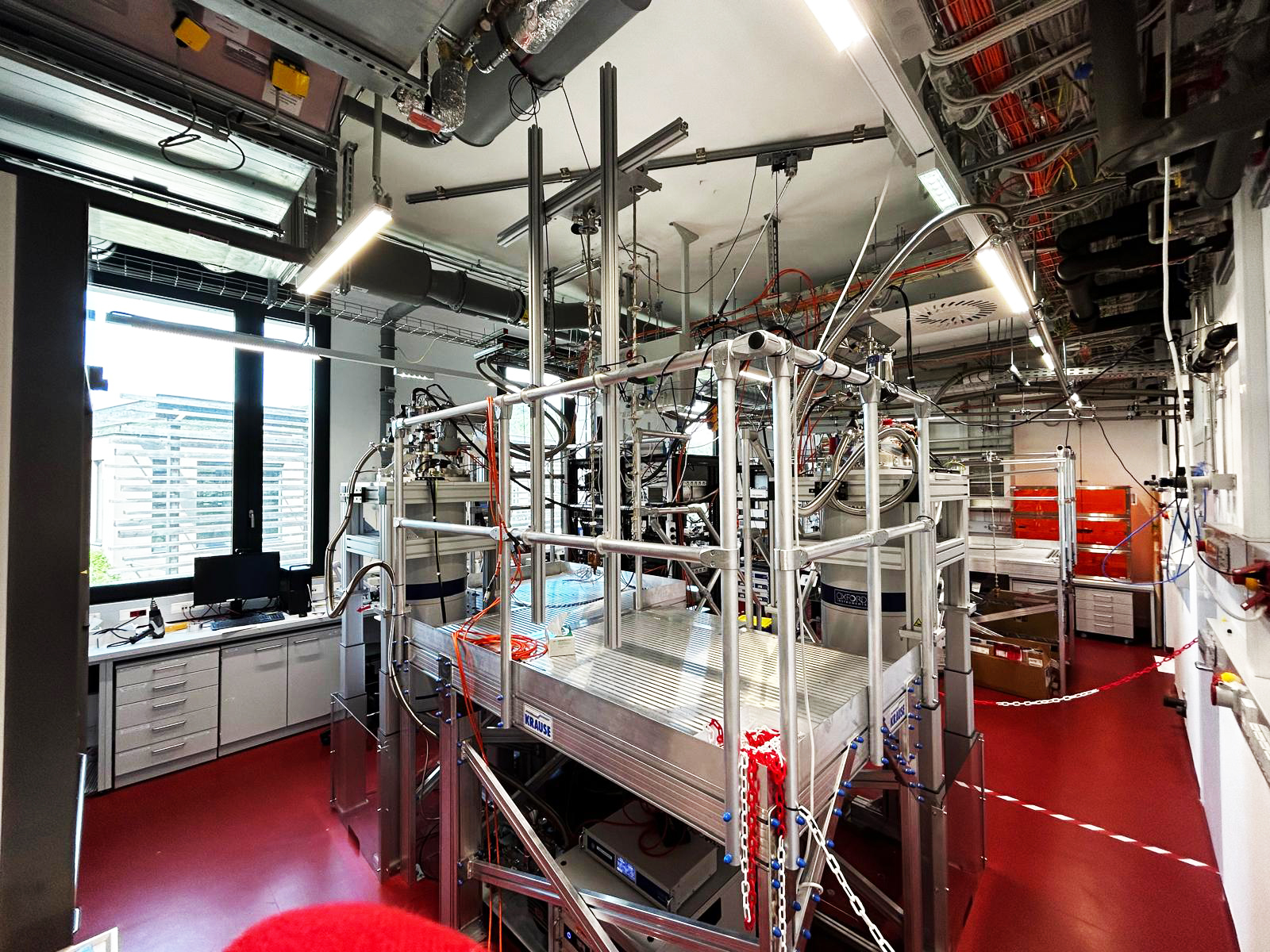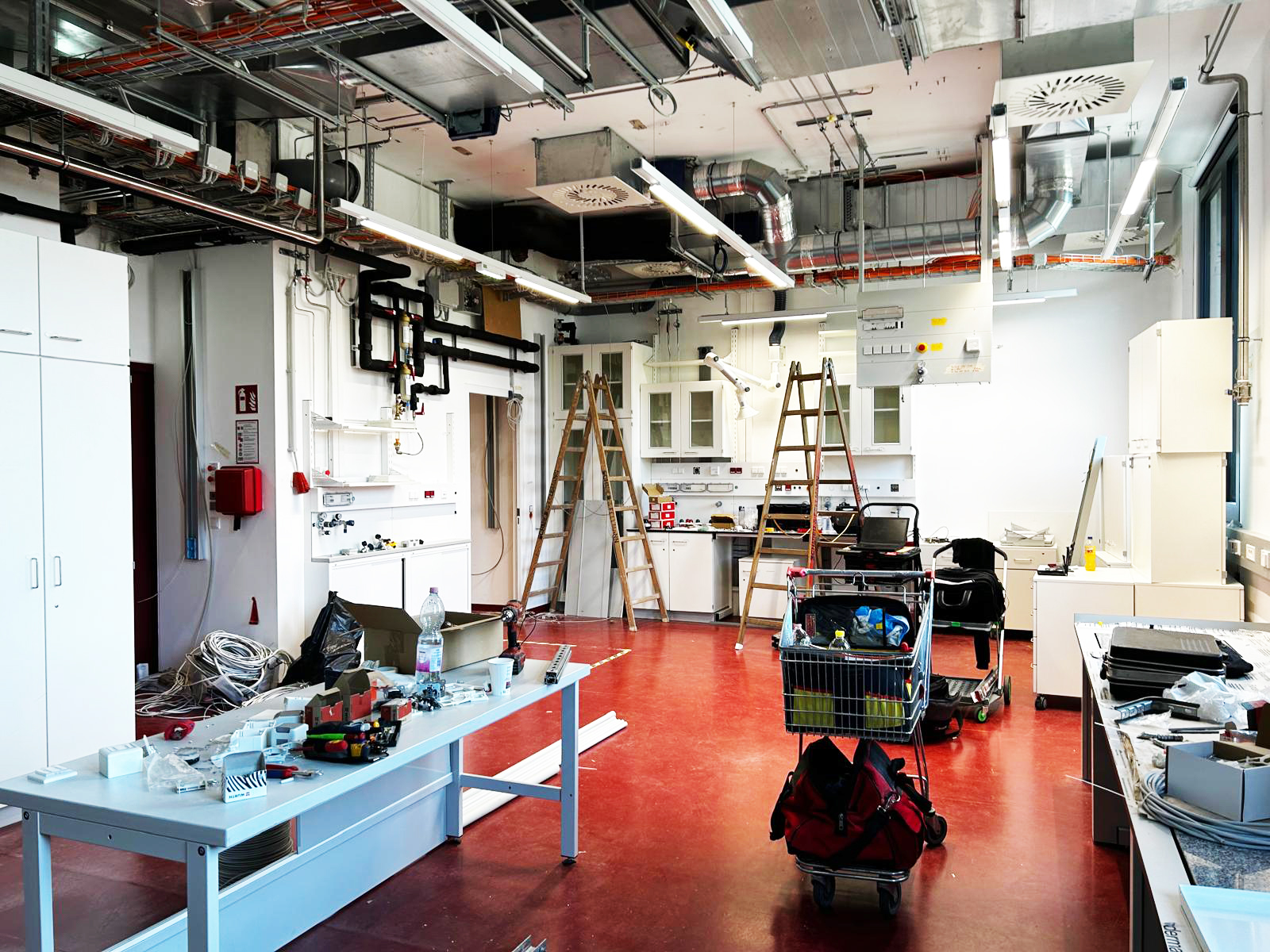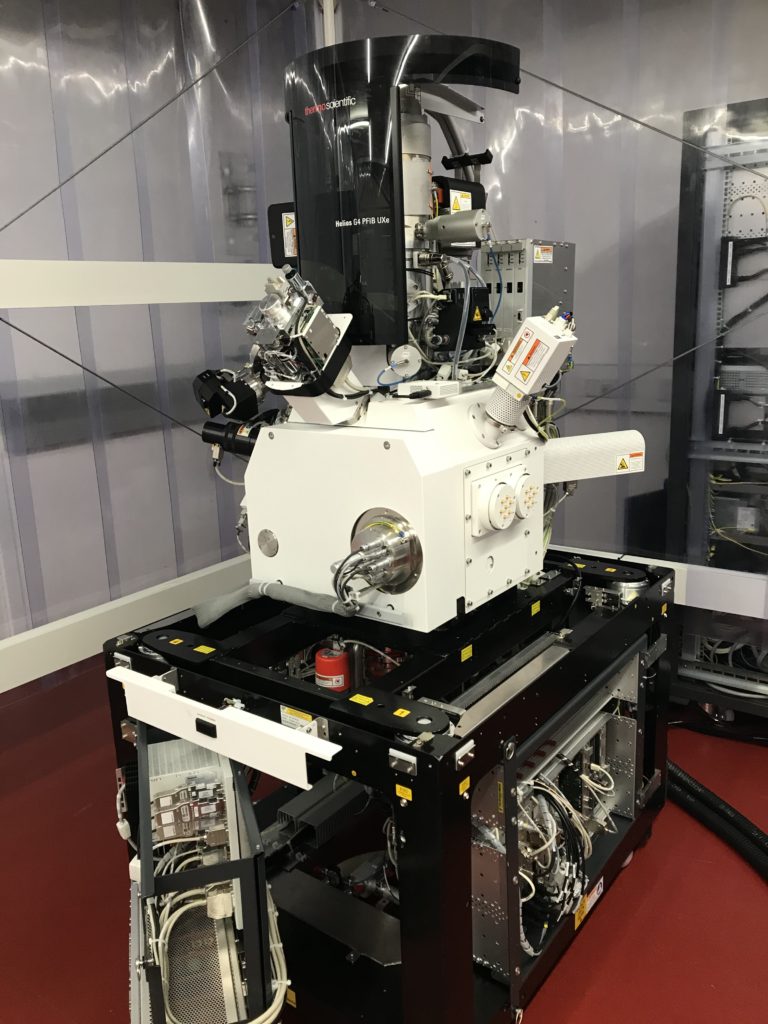Our Lab
Surrounded by the rolling hills of Klosterneuburg and just a short drive into the center of Vienna, our lab at ISTA is perfectly positioned!

Our lab is situated on the 3rd floor of Lab Building West with six windows overlooking the cantina patio. Our lab consists of three small 10 m2 measurement labs and two 65 m2 main lab. The smaller measurement labs house the Laue, the BIB, pumps and compressors for the superconducting magnets, and a 4.5 kV capacitor bank that powers our pulsed field magnet. A huge benefit of moving into a brand new physics building is that we could carefully tailor the infrastructure, including electricity, gas flow, chilled water, etc., for our needs. Everything needed to run each system can be accessed from the ceiling directly above each cryostat. The lab is prepared for carrying out a lot of high-field measurements and we’re looking forward to maximizing its potential!
Equipment
14T Teslatron PT Magnet Install
Laue system
The Laue X-ray diffractometer, purchased from Photonic Science, is used to determine the crystal orientation of a sample. We typically use it to identify the crystal axes of a single crystal before cutting the sample along special directions using the FIB or the BIB. Sometimes it’s used to check that certain axes of the crystal are aligned with respect to a substrate used for measurements to ensure that the crystal axes will be properly aligned with respect to the external magnetic field. The Laue works by emitting a collimated beam of X-ray photons of varying energies onto a sample. The reflected X-rays are recorded on a screen as a pattern of spots determined by the crystal structure and the crystal orientation. The measured pattern is then compared to another pattern produced by the software that assumes known parameters, such as the lattice constants and space group of the crystal, to figure out which directions of the sample coalign with the crystallographic directions.
Magnets
Almost all of our experiments are done in a magnetic field, which is created by passing current through a superconducting coil. We currently have four cryogen-free magnet systems purchased from Oxford Instruments, three of them are known as the TeslatronPT; one with a maximum field of 12 tesla and the other two of 14 Tesla. Within each cryostat, a 4He variable temperature insert (VTI) allows us to carefully control temperature between 300 K and 1.5 K.

The Heliox-VT — a 3He insert — fits inside of the VTI and allows us to reach a base temperature of 300 mK for up to 40 hours. Because the same cryostat design is used for all magnets, the Heliox-VT and all other measurement probes, can easily be swapped between the 12 T and 14 T magnets. During measurement, samples can either be in exchange gas or in vacuum depending upon the needs of the experiment.
The fourth superconducting magnet also has a maximum field of 14 tesla, combined with a dilution refrigerator, known as the Proteox, that reaches 10 mK. The large cooling power of this system is used to counteract the heat produced by the piezo-driven rotation stages that allow us to rotate our sample with respect to the magnetic field. In practice, the sample can be continuously rotated around two axes while maintaining a sample temperature of 100 mK in persistent mode at 14 tesla.
Plasma Focused Ion Beam
To be able to prepare unique experiments on quantum materials, our group relies on the combined use of a scanning electron microscope (SEM) and focused ion beam (FIB). The Helios G4 dualbeam system offers efficient material ablation over large areas with high-resolution imaging. This allows us to customize the shape and size of materials, design micron-sized electrical contacts, and alter the cantilevers or substrates for a variety of reasons. The system is also equipped with energy dispersive X-ray (EDX) and electron backscatter diffraction (EBSD) detectors for compositional and structural analysis of the materials, respectively. EBSD is mainly used to identify the crystallographic axes on small single crystals, and an in-situ nanomanipulator enables precise alignment of these axes with respect to the direction of current flow or the externally applied magnetic field, for example.
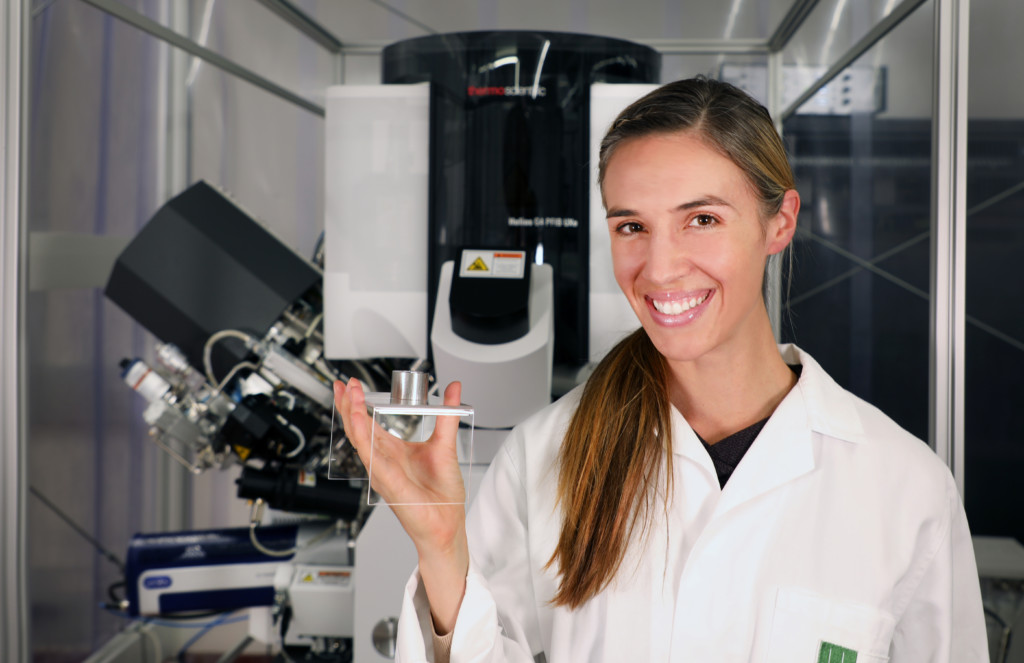
BIB
The broad ion beam (BIB) has two possible operating modes: i) cross-sectioning, which is used to cut large faces of a sample in much shorter times compared to the FIB and ii) flat-milling, which is used to polish samples with ultrasmooth surfaces to enable sample characterisation with an electron microscope. In both modes, an argon ion beam of millimetre-scale diameter is emitted onto the sample. The voltages and incidence angles of the beam can be varied according to the desired functions.
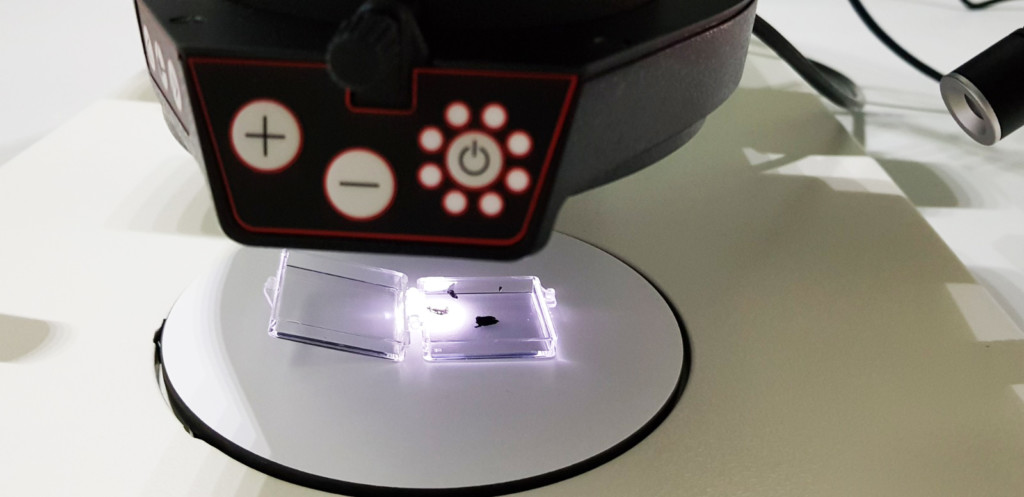

Microscopes
In the lab, we have three all-purpose optical microscopes; the Olympus SZX7 and SZX16 and the Leica M205 C with camera/video capabilities. The Olympus microscopes are in the main lab, both positioned on the long bench in front of the windows. These are the go-to microscopes for soldering or other bench work. The SZX16 provides magnification 115x with a working distance of 81mm, and the SZX7 sacrifices magnification for more working distance. Both Olympus microscopes are mounted on double-armed boom stands so that they can be moved around and tilted, which is perfect for mounting and wiring samples in hard-to-access places, like the side of a probe. The Leica microscope is in the smaller side lab and it is used for our finest work. It has 240x magnification and a working distance of 61.5mm. The high magnification, good optics, and multiple lighting options make it ideal for viewing our smallest samples, while providing just enough space to work with your hands. A 50/50 beamsplitter allows one person to view through the eyepieces, while others can watch on a nearby monitor. The high-quality digital camera captures fine details in high resolution for publication-quality images!
Contact Us
Have questions about our lab, research or comments about TQM? Send them our way via the form below.

